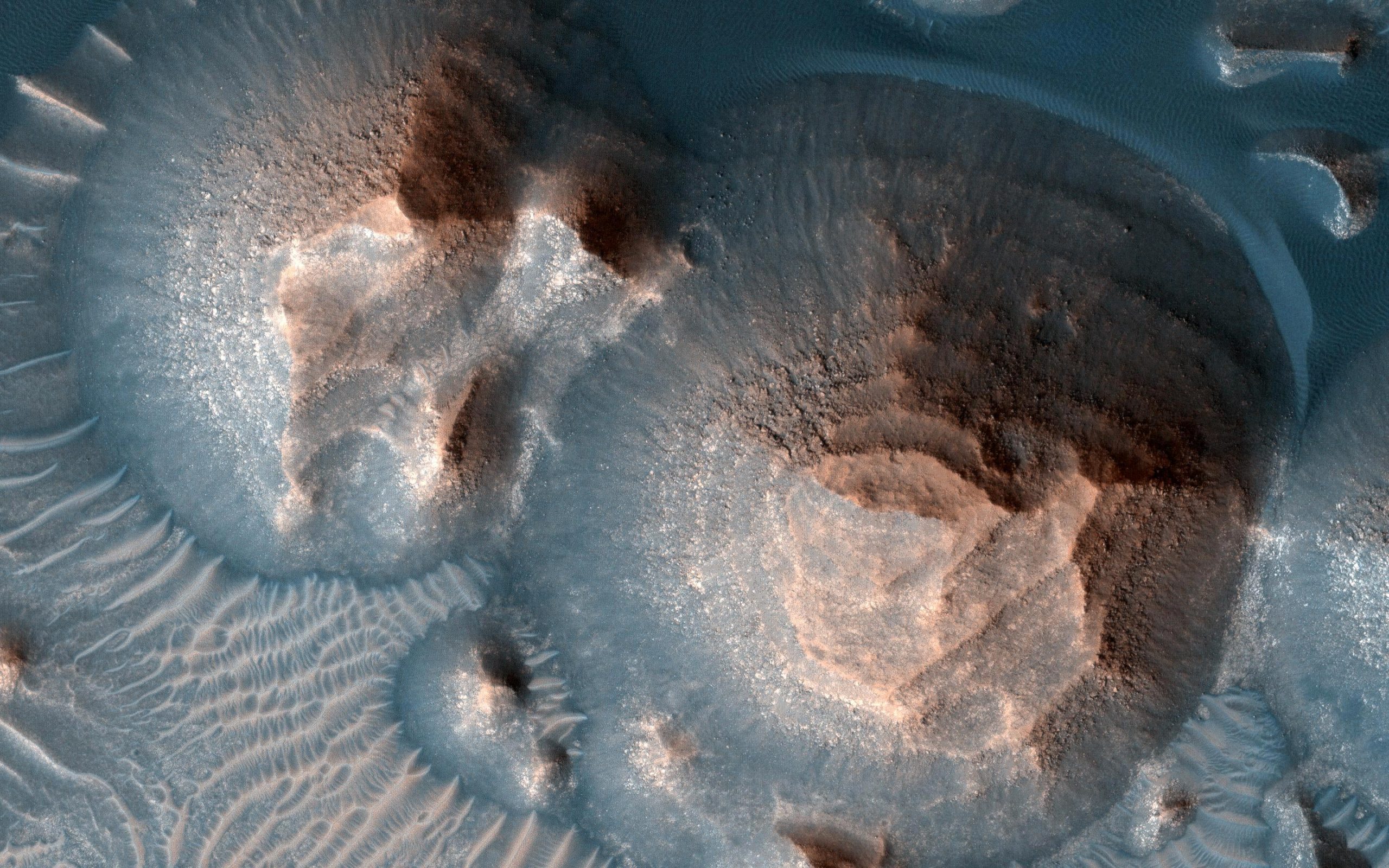
By studying the topography and mineral composition of a portion of the Arabia Terra region in northern Mars, scientists recently found evidence for thousands of such eruptions, or “super eruptions,” which are the most violent volcanic explosions known.
“Each one of these eruptions would have had a significant climate impact – maybe the released gas made the atmosphere thicker or blocked the Sun and made the atmosphere colder,” said Patrick Whelley, a geologist at NASA’s Goddard Space Flight Center in Greenbelt, Maryland, who led the Arabia Terra analysis.This image shows several craters in Arabia Terra that are filled with layered rock, often exposed in rounded mounds.After blasting the equivalent of 400 million Olympic-size swimming pools of molten rock and gas through the surface and spreading a thick blanket of ash up to thousands of miles from the eruption site, a volcano of this magnitude collapses into a giant hole called a “caldera.” Calderas, which also exist on Earth, can be dozens of miles wide.Seven calderas in Arabia Terra were the first giveaways that the region may once have hosted volcanoes capable of super eruptions.
Once thought to be depressions left by asteroid impacts to the Martian surface billions of years ago, scientists first proposed in a 2013 study that these basins were volcanic calderas.Matiella Novak already had been using data from NASA’s Mars Reconnaissance Orbiter to find ash elsewhere on Mars, so she partnered with Whelley and his team to look specifically in Arabia Terra.
The team’s analysis followed up on the work of other scientists who earlier suggested that the minerals on the surface of Arabia Terra were volcanic in origin.Another research group, upon learning that the Arabia Terra basins could be calderas, had calculated where ash from possible super eruptions in that region would have settled: traveling downwind, to the east, it would thin out away from the center of the volcanoes, or in this case, what’s left of them – the calderas.
NASA Goddard scientist, and Arabia Terra study lead author, Patrick Whelley, preparing for a 3D laser scan survey at the site of the 1875 explosive eruption of the Askja Volcano, Iceland, August 2, 2019.Looking in the walls of canyons and craters from hundreds to thousands of miles from the calderas, where the ash would have been carried by wind, they identified volcanic minerals turned to clay by water, including montmorillonite, imogolite, and allophane.
The same scientists who originally identified the calderas in 2013 also calculated how much material would have exploded from the volcanoes, based on the volume of each caldera.This information allowed Whelley and his colleagues to calculate the number of eruptions needed to produce the thickness of ash they found.
It turned out there were thousands of eruptions, Whelley said?
On Earth volcanoes capable of super eruptions – the most recent erupted 76,000 years ago in Sumatra, Indonesia – are dispersed around the globe and exist in the same areas as other volcano types.
Mars, too, has many other types of volcanoes, including the biggest volcano in the solar system, called Olympus Mons.
Arabia Terra so far has the only evidence of explosive volcanoes on Mars.
How can such a tiny planet melt enough rock to power thousands of super eruptions in one location?’” he said.